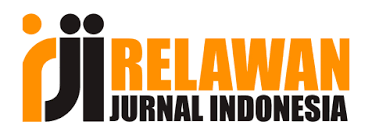Using Authentic Materials to Teach Speaking
Abstract
The purpose of this research is to find out whether the using authentic materials on teaching speaking is effective for foreign language learners. In this research a group of language learners who study at language center on intermediate level, at the age of 17.1 on average, participated. To get results participants had two extra speaking lessons. In the first lesson group of learners were taught and did activities with usual and non-authentic materials. Their interest and activeness were observed. In the second meeting participants were observed too. But the difference between two lessons was that they were taught with authentic materials. Both observation and results showed that using authentic materials in teaching speaking is more efficient than using usual class materials.
References
Teaching. IJSTR (Vol3) No 10 Retrieved from www.ijstr.org/final .print/TheEffect-Of-Using…pdf on July 2016
2. Al-Lawatiyah, N. (2002). Washback effect of secondary certificate english examination on teaching and learning processes (Doctoral dissertation, Sultan Qaboos University).
3. Belaid, A.M, Murray, L. (2015). Using Authentic Materials in the Foreign
Language Classroom: Teacher Attitudes and Perception in Libyan University.
International Journal of Learning and Development (5) No 3. Online.
Retrieved on July 14th from www.macrothink.org/ijld
4. Berardo, S. A. (2006). The Use of Authentic Materials in the Teaching of Reading.
The Reading Matrix (Vol 6) 2. September, 2006.
5. Boxer, D., & Cohen, A. D. (Eds.). (2004). Studying speaking to inform second language learning (Vol. 8). Multilingual Matters.
6. Brown, G. (1994). Language and Understanding. Oxford University Press, Walton St., Oxford, OX2 6DP, England, United Kingdom (ISBN-0-19-437191-3)..
7. Bygate, M. (1987). Speaking. Oxford university press.
8. Bygate, M. (2000). Teaching and researching speaking. Cognitive Sciences, 7(3), 141-144.
9. Bygate, M. (2009). 15. Teaching the spoken foreign language. In Handbook of foreign language communication and learning (pp. 401-438). De Gruyter Mouton.
10. Bygate, M., Skehan, P., & Swain, M. (2001). Researching pedagogical tasks: second language learning, teaching, and assessment.
11. Caroline C. Hwang. (2005). Effective EFL Education through Popular Authentic
Materials Asian. EFL Journal, Volume 7, Issue 1, Article 7.
12. Diyyab, E. A., Abdel-Haq, E. M., & Aly, M. A. S. (2013). Using a multimedia-based program for developing student teachers' EFL speaking fluency skills. ERIC Clearinghouse.
13. Ellis, N. C. (2005). At the interface: Dynamic interactions of explicit and implicit language knowledge. Studies in second language acquisition, 27(2), 305-352.
14. Ellis, R. (2012). Language teaching research and language pedagogy. John Wiley & Sons.
15. Firmansyah, E. (2015). Students’Perception on the Use of uthentic Materials in
Senior High School. Bahasa & Satra (vol V) No 1 April 2015.
16. Firth, A. (1996). The discursive accomplishment of normality: On ‘lingua franca’English and conversation analysis. Journal of pragmatics, 26(2), 237-259.
17. Genhard, J.G. (1996). Teaching English as a foreign language: A teacher selfdevelopment and methodology. Ann arbor: the university of Michigan press.
18. Gilmore, A. (2007). Authentic materials and authenticity in foreign language
learning. Language Teaching, 40(2), 97-118.
19. Hedge, T. (1993). Key concepts in ELT. ELT journal, 47(3), 275-277.
20. Hinkel, E. (2006). Current perspectives on teaching the four skills. Tesol Quarterly, 40(1), 109-131.
21. Idayani, A. (2014). Authentic Materials on Stdents’ Speaking Skill. J-SHMIC. (Vol
I) N0 1 August 2014. Retrieved from
www.uir.ac.id/index.php/SMC/article/download 418/355
22. Kilickaya, F. (2004). Authentic materials and cultural content in EFL classrooms. The
Internet TESL Journal,10(7).
23. Kilickaya, F. (2004). Authentic materials and cultural content in EFL classrooms. The
Internet TESL Journal,10(7).
24. KURUDAYIOĞLU, M. (2011). TÜRKÇE ÖĞRETMENİ ADAYLARININ SÖZLÜ ANLATIMLARININ DÜŞÜNCEYİ GELİŞTİRME TEKNİKLERİ AÇISINDAN İNCELENMESİ. Türklük Bilimi Araştırmaları, (29), 213-226.
25. Lazaraton, A. (2001, July). Qualitative research methods in language test development and validation. In European language testing in a global context: Proceedings of the ALTE Barcelona Conference (pp. 51-71).
26. Martinez, A. (2002). Authentic Materials: An Overview.
27. Segalowitz, N. (2003). Automaticity and second languages. The handbook of second language acquisition, 382-408.
28. Skehan, P., & Foster, P. (2005). 7. Strategic and on-line planning: The influence of surprise information and task time on second language performance. In Planning and task performance in a second language (pp. 193-216). John Benjamins.
29. Wardhaugh, R. (2006). An introduction to sociolinguistics (5th Ed.). USA: Wiley-Blackwell.

















